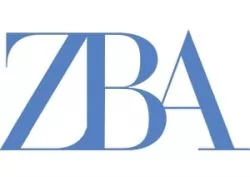Introduction
Cross border insolvency in India is legal terrain that is wholly unregulated. This lacuna in India's nascent insolvency regime has sought to be remedied by the Government of India, (GOI) which recently released a set of draft guidelines. The guidelines mirror the international insolvency framework established by the UNCITRAL Model Law on Cross Border Insolvency, 1997, (Model Law), albeit, with minor modifications.
Brief Analysis of the Draft Guidelines
Similar to the domestic insolvency regime, the National Company Law Tribunal, (NCLT) is the designated adjudicating authority for cross border insolvency issues. The guidelines introduce into Indian jurisprudence, familiar concepts of international insolvency such as 'centre of main interest' and 'foreign main proceeding'.
However, there are certain aspects where the draft departs from the Model Law. For instance:
Applicable to Corporate Debtors
only
The draft regime is only applicable to corporate debtors and does
not extend to individual debtors- GOI's rationale being that it
intends to first observe the workings and impact on corporate
debtors before extending it to individuals;
Legislative Reciprocity
The applicability of the regime is restricted only to those states
that have adopted the Model Law or to those states that have been
notified by GOI;
GOI empowered to exclude States
GOI is conferred the power to exclude the application of the regime
to any state on national security or public interest grounds;
Limited Jurisdiction provision
omitted
There is no equivalent to Article 10 of the Model Law that
expressly provides that an application by the foreign
representative to the NCLT is not to be regarded as a submission by
the foreign representative or the corporate debtor or its foreign
assets to the jurisdiction of the Indian courts, other than for the
purposes of the application;
No express obligation to co-operate to the maximum
extent possible
The Model Law provision obliging the Court to co-operate to the
'maximum extent possible' with foreign courts and foreign
representatives has been omitted. Although the draft provides for
co-operation, an express assurance along the lines of the Model Law
would align the draft with the key objectives of the UNCITRAL Model
Law and avoid unnecessary ambiguity and debate;
Provision for Joint Hearing
The draft has introduced an additional provision allowing a
"joint hearing" to take place in concurrent proceedings.
It enables the conduct of a joint hearing with another foreign
Court in a concurrent proceeding. This is a welcome provision in
aid of the objective of cross-border 'cooperation' that
accords with the philosophy of the Model Law and is aimed at
avoiding inconsistent judgments resulting from parallel litigation
of the same dispute.
Conclusion
It is important to emphasise that the additions and deviations to the Model Law highlighted above do not constitute law, as yet. Nevertheless, the draft guidelines do not mark a wholesale departure from established principles of international insolvency. The guidelines seek to integrate and align the Indian judicial system with international insolvency and are an acknowledgement that a modern and effective cross border insolvency regime is essential to sustain the 'Ease of Doing Business' policy of the GOI.
Posted on 10 July 2018 by Zarir Bharucha & Niloufer Lam
The above is a generic analysis and should not be regarded as a substitute for specific advice based on the facts of a client's objectives and specific commercial agreements reached. Please do reach out to us at mail@zba.co.in for any queries.


